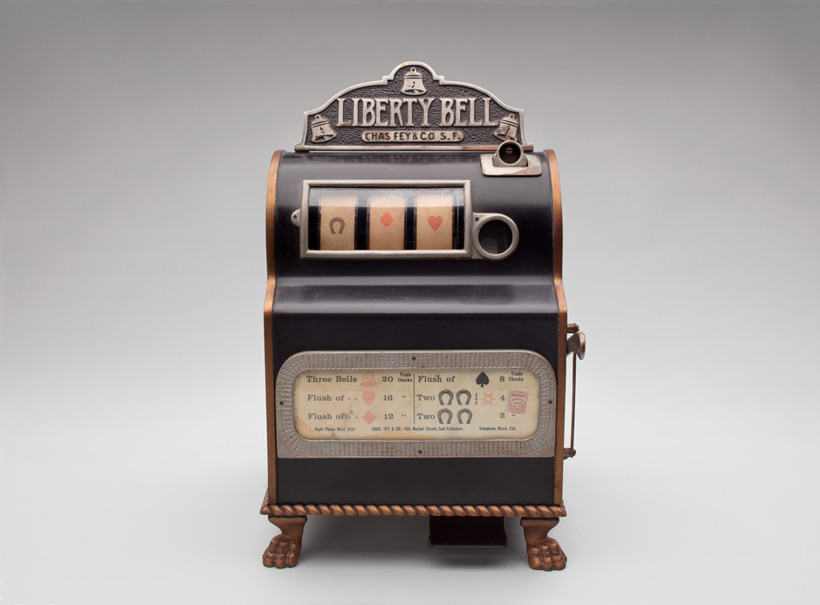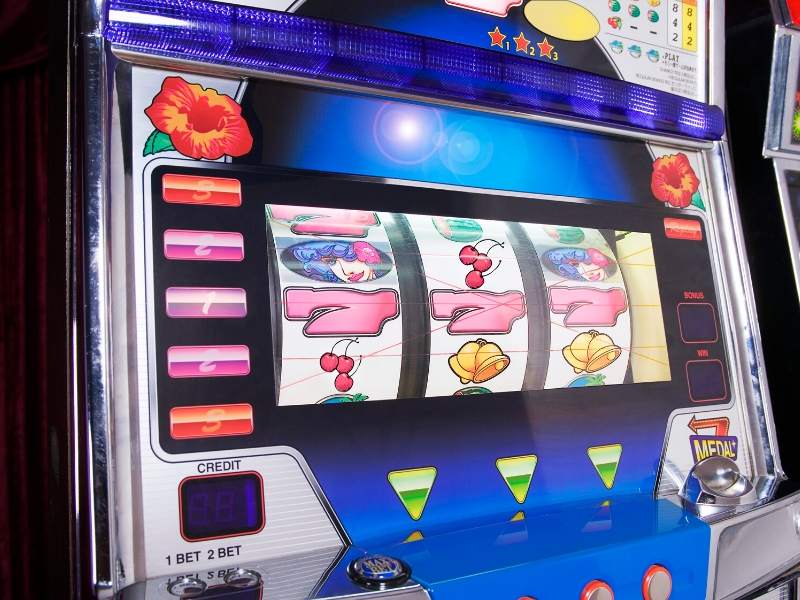The first slot machines were very primitive, mechanical gambling machines, a lot more different than what people are used to see today. Before the invention of the electronic slot machines where you only had to push a button, slot machines were operated with a lever with which slot players had to activate the reels. In collaboration with the company, Liberty Bell, the first slot machine was developed and officially invented in 1887, created in San Francisco, California. Despite this being the official unveiling, it is widely suspected that there were several prototypes made by Fey that came a little earlier.
- First Slot Machine 1887 Machine
- First Slot Machine 1887 Serial Numbers
- First Slot Machine 1887
- First Slot Machine 1887 For Sale
- First Slot Machine 1887 Penny
Affiliate links within this post may be commissionable.
The origins of the slot machine
You’ll see them in pubs, clubs, bookmakers, hotels and casinos to name but a few – but what is it that makes slot machines so entertaining? Perhaps it’s the colourful themes, sound effects, the bright lights or of course, the chance to win instant cash prizes.
Ever since slot machines have been made widely available and accessible, the interest in them has continued to increase as software and gaming developers continue to improve users’ experience to make them as enticing as possible. But where did it all begin? Let’s take a look through the history of the slot machine. Before we do, be sure to check out the latest online slots via Betfair.
19th century development
You have to go all the way back to 1891 to trace the origins of the slot machine, which was developed by New York based company Sittman and Pitt. As you can imagine, the slot machine was fairly basic compared to what we know today and contained five drums with a total of 50 playing cards – with the aim of making a winning poker hand to be awarded a pay-out.
First Slot Machine 1887 Machine
These slot machines would typically be found in bars and casinos, costing just a nickel to play and the user would have to pull down a lever to start the game. It wasn’t often that users won, as the house edge was increased as the ten of spades and jack of hearts were removed, cutting the chance of getting a royal flush in half.
Although Sittman and Pitt are recognised as being the company to develop the first slot machine, Charles Augustus Frey is credited with actually inventing the first prototype between 1887 and 1895. Frey altered the way slot machines worked somewhat and replaced the existing five drums with three reels.
Frey also replaced the playing cards with symbols – hearts, diamonds, spades, horseshoe and a liberty bell. Players would win by lining up three bells which in turn, saw the machine named Liberty Bell. Frey’s newly devised slot machine saw the popularity in playing them skyrocket, leading to the continued improvements over the coming decades.
20th century enhancements
At the turn of the 20th century, slot machines were banned in the United States which led to the development of the fruit machine. All the symbols were changed to represent different fruits and as opposed to cash prizes, players would win sweets and other similar treats. Hardly the same as real cash, but it carved open a new era for the fruit machine to flourish.
In 1907, manufacturer Herbert Mills devised another new slot machine, this time it was called the Operator Bell. Mills adopted the famous ‘BAR’ symbol which is still commonly seen today, thus starting the Bell-Fruit company which is still going strong.
It wasn’t until some 45 years later that slot machines developed into fully electromechanical machines, and the lever was removed as it was considered out dated. Popularity in the newly-improved slots increased tenfold and automatic pay-outs of up to £500 were awarded to jackpot winners.
From the 1970s onwards, slot machines underwent numerous tweaks and changes to keep improving players’ experiences. The first real video slot was introduced in 1976 and was quickly approved by the Nevada State Gaming Commission, seeing an explosion in popularity from players all over the US.
During the 1990s, slot machines hit another major milestone with the release of “Reel Em”. This was the first-ever slot to incorporate a second screen bonus round, which provided players with a stronger chance of winning and altered the way slots would be played in the future. Reel Em was a major hit in bars and casinos throughout the US and the start of the 21st century has seen a range of improvements.
The vast majority of slot machines we see now days will have a theme based on a TV show or movie, and the pay outs have increased massively in recent times. The rise of online slot machines has seen a large number of players opting to try their luck via the internet, but at the end of the day, it was Frey’s invention that has provided a fun and entertaining way to gamble.
- Fall Guys Game Review - December 9, 2020
- Genshin Impact Review Of Free To Play Open World Anime RPG With Gacha - December 8, 2020
- Cat President 2 Visual Novel Otome Game Review - November 30, 2020
First Slot Machine 1887 Serial Numbers

First Slot Machine 1887
Charles Fey (born August Fey in Vöhringen, Bavaria) (September 9, 1862 [1] – November 10, 1944) was a San Franciscomechanic best known for inventing the slot machine.
Career and Invention[edit]

First Slot Machine 1887 For Sale
As a young man, Charles Fey worked in France and London before emigrating at age twenty-three to New Jersey, where his uncle lived.[2]
Charles traveled all over the USA and settled in San Francisco, California where he started working at the Western Electric Works company in 1885.[3] Later he started his own company together with Theodore Holtz and Gustav Friedrich Wilhelm Schultze: this company worked with electrical equipment and telephones.
In the 1880s, slot machines required an attendant to make a payout, usually tickets or tokens. Gustav Friedrich Wilhelm Schultze's 'Horseshoe Slot Machine' of 1893 was the first machine to include an automatic payout mechanism.[2] In 1895, Fey invented a modified version of the Horseshoe that paid out coins; this machine became incredibly popular.
Fey opened a slot machine workshop in 1896[4] or 1897.[2]
In 1898, he designed the 'Liberty Bell Slot Machine,' the most famous slot machine of its day. When three bells aligned, it paid fifty cents. Fey installed and managed his machines in saloons throughout San Francisco. Because gambling was illegal in California, Fey could not patent his device, leading to many competitors.[2]
First Slot Machine 1887 Penny
Personal life[edit]
In San Francisco, Fey met Marie Christine Volkmar (1866-1942), but their courtship was interrupted by illness. In the early 1880s, Fey had been diagnosed with tuberculosis; in accordance with scientific knowledge at the time, he moved to a warmer climate (Mexico) for a few years, before returning to San Francisco for a series of creosote treatments, which were successful. He married Marie in 1889. The couple would have three daughters and one son.[2]
During this time, Fey changed his name from August to Charles, supposedly because he did not like the nickname 'Gus.'[2]
References[edit]
- ^'California Death Index'. Archived from the original on 2008-01-18. Retrieved 2008-02-11.
- ^ abcdefWohlers, Tony and Eric Schmaltz. 'Charles August Fey.' In Immigrant Entrepreneurship: German-American Business Biographies, 1720 to the Present, vol. 3, edited by Giles R. Hoyt. German Historical Institute. Last modified March 25, 2014.
- ^Charles Fey History and BiographyArchived June 8, 2008, at the Wayback Machine
- ^Charles Fey at SlotsMachinesHistory.com
External links[edit]
- Charles Fey at Find a Grave